Chapter Champions
ACR state chapter work remains a microcosm of radiology practices and protections.
Read more
Each year, the College awards individuals whose work and dedication advance and strengthen the specialty. Spanning continents and subspecialties, this year’s recipients include individuals from across the community of imaging intervention and therapy. Commendations will be awarded at ACR 2025, the annual meeting taking place in May in Washington, D.C.
The Gold Medal is awarded by the BOC to radiologists, radiation oncologists, medical physicists and other distinguished scientists for their extraordinary service to the ACR or to the discipline of radiology. Service to radiology can be in teaching, basic research, clinical investigation or radiologic statesmanship, such as outstanding contributions in working with the ACR, other medical organizations, government agencies and quasi-medical organizations.
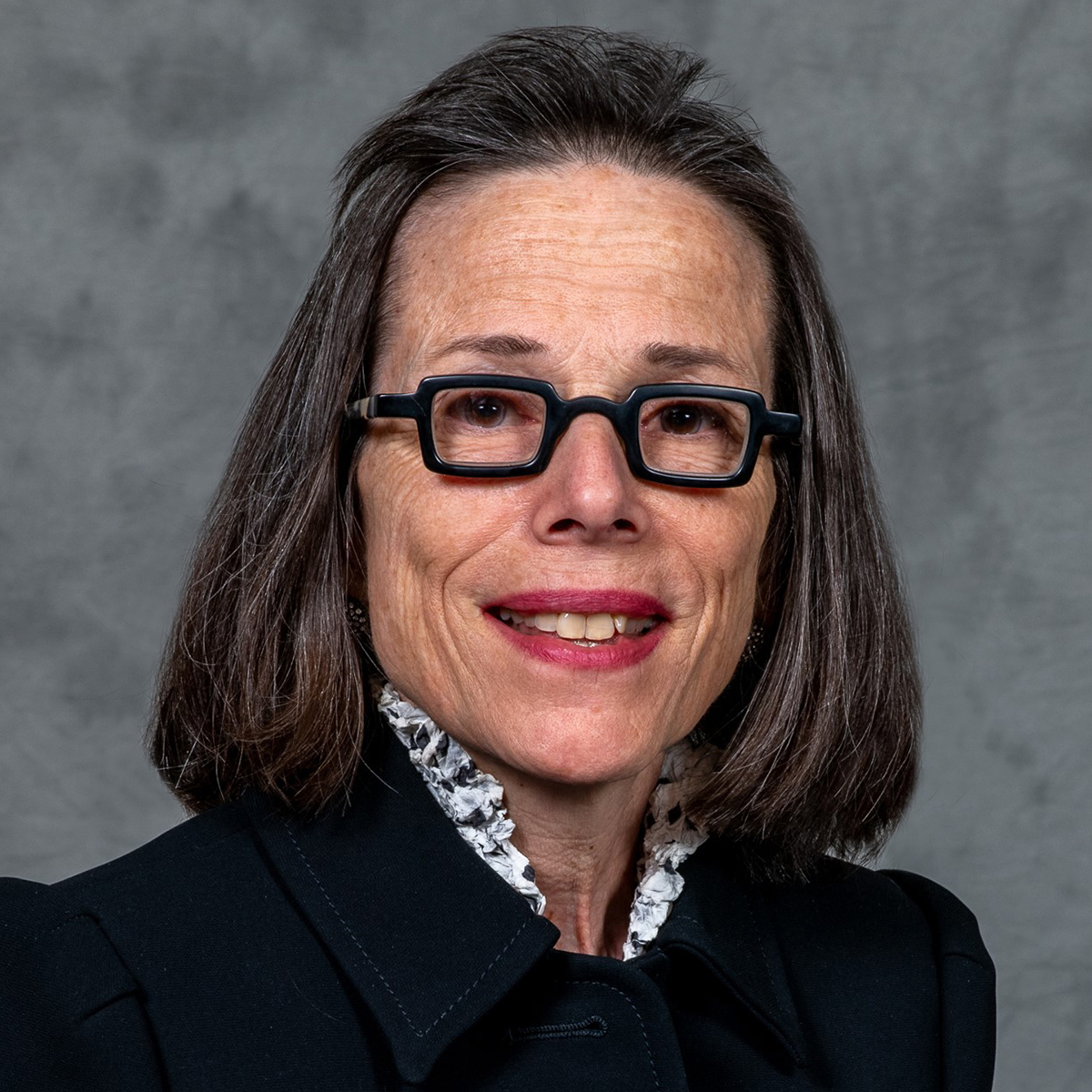 The ACR’s criteria for Gold Medal awardees specifies “distinguished and extraordinary service to [the College] or to the discipline of radiology.” Service may be through teaching, research, clinical investigation or acting as representative for the specialty within other medical and government associations and agencies, among other contributions. One ACR Gold Medal recipient, Jacqueline A. Bello, MD, FACR, director of neuroradiology at Montefiore and professor of radiology and neurosurgery at Montefiore’s Albert Einstein College of Medicine, truly epitomizes a changemaker within the specialty.
The ACR’s criteria for Gold Medal awardees specifies “distinguished and extraordinary service to [the College] or to the discipline of radiology.” Service may be through teaching, research, clinical investigation or acting as representative for the specialty within other medical and government associations and agencies, among other contributions. One ACR Gold Medal recipient, Jacqueline A. Bello, MD, FACR, director of neuroradiology at Montefiore and professor of radiology and neurosurgery at Montefiore’s Albert Einstein College of Medicine, truly epitomizes a changemaker within the specialty.
One long-time friend and colleague echoes this in describing Bello. “Through her multifaceted and distinguished career, she has excelled in each of these areas. In fact, you could not design a career that more accurately reflects these award requirements,” he says. In addition to her clinical focus on adult and pediatric neuroradiology, Bello has been and continues to be a change leader in medical education, advocacy, quality and safety and healthcare policy impacting the practice of radiology.
Beyond Bello’s primary focus of her fellowship subspecialty of neuroradiology and a fervid interest in ensuring the highest quality patient care, she was active in areas of the economics landscape —serving on the Committee on Coding and Nomenclature and the General, Small and Rural Practice Committee for neuroradiology. Her engagement with the ACR spans more than 20 years, beginning as an ACR Councilor from her home chapter, the New York Radiological Society (NYSRS), where she served two six-year terms. She was elected NYSRS President in 2007 and still serves on the NYRS Executive Committee.
Bello also served as president of the New York Roentgen Society in 2010 and president of the American Society of Neuroradiology (ASNR) in 2017. A Columbia University President’s Gold Medalist, she was awarded the Alumni Medal for Meritorious Service by Columbia’s College of Physicians and Surgeons. In 2024, Bello was awarded the ASNR Gold Medal.
Her exemplary leadership in quality and safety charted Bello’s course to Chair of the ACR Commission on Quality & Safety. She helped refine ACR’s accreditation programs, Practice Parameters and Technical Standards and the ACR Appropriateness Criteria. Other roles within the College followed, including vice-Chair and then Chair of the ACR Board of Chancellors — establishing herself as a true spokesperson for ACR and its global representative serving on the Executive Committee of the International Society of Radiology (ISR) and as ACR representative to the International Society for Strategic Studies in Radiology (IS3R). In that role she contributed significantly to the Task Force on Value Based Radiology — leading to a highly regarded publication in JAMA. Extensively published, her work is reflected in scores of original articles, book chapters, published abstracts, posters and exhibits, and other grant-supported projects.
While her education and training background is too extensive to list, it is worth noting that Bello was a member of the first co-ed class admitted to Dartmouth College in 1972 (graduating on-track after four years). This achievement, says a fellow Dartmouth graduate who was in medical school there during the transition from an all-male student body, is a testament to a confident and capable woman — taking on that environment and thriving. “She is an exceptional leader, a mentor and close friend to those who have worked with her on numerous projects over the years. She has a unique ability to articulate inspiring vision for her colleagues in the field.”
Bello’s commitment has been characterized by a willingness to say “yes” whenever asked to serve and to seize opportunities to advance the specialty as they arise. Another peer identifies her as “a collaborator who drives strategy among key medical organizations, subspecialty societies and others” — including the convening of the Radiology Health Equity Coalition (RHEC). As Bello likes to point out, “We don’t own health equity, because everyone needs to own health equity.” As ACR Board Chair, Bello was a staunch supporter of health equity and overcoming barriers to health equity in radiological care.
“On a personal note, Bello is open, warm and engaging — and has always demonstrated the highest ethical standards and a commitment to collegiality and collaboration,” says ACR CEO Dana H. Smetherman, MD, MPH, MBA, FACR, FSBI. “In order to encourage these same high standards and collaborative spirit when she served as BOC chair, Jackie established a set of norms for BOC operations with input and feedback from all Board members.” Smetherman says, “During her service as ACR Board Chair, Jackie faced and overcame many challenges as we emerged from the pandemic. She managed every situation with grace and maintained her hallmark steadfast dedication to the College and her leadership role, always persevering. I am honored to have worked with Bello many times during my own service to the ACR and other organizations and cannot imagine a more deserving recipient of the ACR Gold Medal.”
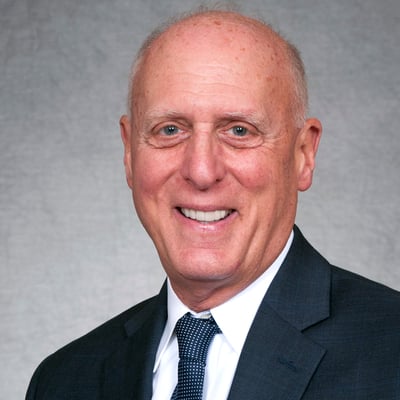
In another life, Alan D. Kaye, MD, FACR, might have been a history professor, having graduated magna cum laude from Harvard with a bachelor’s degree in history and science. However, an assistant professor and friend suggested he pursue medicine. Kaye needed convincing and had to experience life in a hospital before committing to becoming a physician.
“I took a semester off, worked as a nurse’s aide and I came out of there saying, ‘I don't want to be a doctor,’” Kaye laughs.
He used that time as a learning opportunity and throughout his career has continued to find ways to rack up knowledge. He was initially drawn to radiology’s seemingly endless breadth. “I have always loved to learn. Experiencing clinical rotations in medical school, I dismissed many potential specialty choices because they were too narrow for my liking. With radiology, you can never know enough.”
Perhaps you can’t ever know enough in radiology, but over Kaye’s 44 years since becoming a physician, he’s been trying. After earning his medical degree from the University of Connecticut, Kaye went on train at the Hospital of the University of Pennsylvania and then serve as senior attending radiologist and department chair at Yale-affiliate Bridgeport Hospital and St. Vincent’s Medical Center in Bridgeport, Conn., and was an assistant clinical professor of radiology at Yale New Haven Hospital. He spent 24 years as the CEO and managing member of Advanced Radiology Consultants LLC.
Experiencing clinical rotations in medical school, I dismissed many potential specialty choices because they were too narrow for my liking. With radiology, you can never know enough .
And if those roles were not enough, Kaye worked his way up — learning along the way — from ACR councilor for the Radiological Society of Connecticut (of which he is also a past president) to the ACR Council Steering Committee, ACR council speaker and then ACR president in 2017–18. This trajectory was motivated by a passion for understanding the inner workings of health policy, economics and advocacy, something he’s continued to be involved in as he donates time to health policy efforts for Connecticut state government. Kaye has been an avid opponent of self-referral in imaging.
Kaye’s long history in the ACR provided the opportunity to give back and to continue learning. He’s contributed to the specialty in other ways, as well, including through teaching residents and referring attendings. Named Bridgeport Hospital’s Resident Teacher of the Year three times during his tenure, Kaye enjoys “interacting with smart people,” he says. “And when you teach, you learn.”
As for his most valued accomplishments, the list is ongoing. “One of the nice things about my career has been that I’ve had probably seven or eight careers without changing jobs,” he says. “I’ve been chairperson of a department and I've been teacher of the year. I've been the leader of a practice that grew six times and of a regional physician hospital organization that amalgamated into a 1,100-physician integrated network. I became a member of the hospital board and of the Yale Contracting Board, and now I'm chief medical officer of a startup radiology IT company. So I guess you can say that I am a ‘serial radiologist.’”
A challenge for most physicians, balancing family and career was a priority for Kaye. “I managed to coach both my daughter and my son in their sports,” he says. “But I never looked at managing this balance as a challenge. I have a great partner in my wife.” Even now, with all of his career accomplishments, raising children has been the most rewarding part of his life, on par with being with his three granddaughters. “If you want to see me smile, make me think of my Rosie, Bella and Anna.”
With the ACR Gold Medal, Kaye has another reason to smile, but it means more than you would expect. “It's been a very rewarding, diverse career with continuous learning that has given me opportunities to make a difference,” he says. “This award is the capstone.”
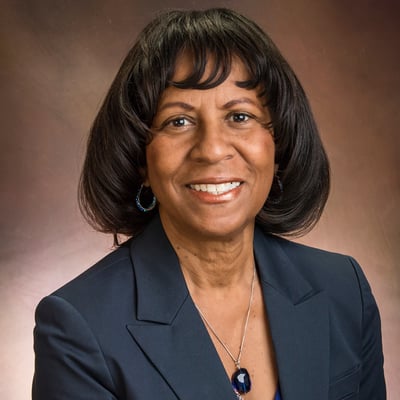
Leaders in radiology call Beverly G. Coleman, MD, FACR, “a force to be reckoned with in radiology.” Coleman is touched by this recognition from her peers. “I think that anytime you are recognized by your colleagues in a professional career, it is indeed an honor,” Coleman says.
Coleman’s journey to radiology began in the 1970s. At a time when most women in medical school were advised to go into either pediatrics or obstetrics and gynecology, neither of those fields resonated with Coleman. When she got an in-depth look at radiology during a rotation at Boston Children’s Hospital, it opened her eyes to a field she hadn’t had any exposure to up to that point. “What I thought was so intriguing was that surgeons, cardiologists, oncologists and many specialists, were coming down to the radiology department to look at the images and ask questions. ‘Is this mass focal organizing pneumonia?’ Or, ‘Is this a lung cancer?’ I thought, ‘Wow, these are incredibly smart people. Everybody’s coming to the radiologist to get an opinion.’”
Coleman got her start in the ACR in 1980 and would go on to serve the College in many capacities, including on the Council Steering Committee, the Board of Chancellors, and as chair and vice chair of the Commission on Ultrasound. The highlight of her time with the ACR came in 2021, however, when she was elected president, the first African American to receive this honor in the College’s near 100-year history. Coleman’s election to the ACR presidency happened when COVID-19 was still new, resulting in many meetings, including ACR 2021, taking place virtually. The following year at ACR 2022, Coleman delivered a speech that drew parallels between her life journey and the characteristics that make the College the most effective career partner of all radiologists. In her lecture, Coleman wanted people to “get a flavor of who Beverly Coleman was,” she says.
Coleman has been referred to by her colleagues as a “trailblazer in the field of radiology and particularly fetal ultrasound.” Coleman’s commitment to this area of the specialty arises from her understanding of how important fetal ultrasound is to patients. “It’s critical,” Coleman says. “You have multiple lives involved. You have the mom, the dad, the grandparents and often siblings.” Tackling this very complex field involves analyzing unique diagnoses, such as lung lesions, abdominal wall defects, and central nervous system anomalies. Assisting a family with a child born with an abnormality is incredibly rewarding to Coleman and her team at the Children’s Hospital of Philadelphia’s Center for Fetal Diagnosis and Treatment, and she hopes her work will continue to make an impact until her retirement later this year.
The ACR Gold Medal follows Coleman’s recent RSNA 2024 Gold Medal, an award she says took her completely by surprise. Coleman has been named to the list of Top Doctors in Diagnostic Radiology by Philadelphia Magazine 14 times since 2005 and has also been listed in the America’s Top Doctors list 14 times since 2009. Coleman is a longtime fellow of multiple organizations, including the ACR, the American Institute of Ultrasound in Medicine and the Society of Radiologists in Ultrasound. Coleman was named a fellow of the American Association for Women in Radiology in 2021 and was the recipient of the AAWR’s 2022 Marie Sklodowska-Curie Award, on top of numerous awards and honors from other organizations.
As for advice to the next generation of radiologists, Coleman urges those pursuing a career in the specialty to prepare for a long but rewarding journey. “Study hard, be the first one in the door and the last one to go,” she says. “People say, ‘Oh, you can’t give more than 100%’ and I say, ‘Oh, if you put 110% into it, that’s what you're going to get out of it.” Coleman also wants those pursuing a career in radiology to make sure the field they select is the one they will enjoy. “For the aspiring radiologist, you have to choose what part of this field that you love the most, and you must put everything into it that you have,” she says. “And then give a little bit more. And if you can go beyond that, you will be rewarded.” Through this work ethic and can-do attitude, Coleman has enjoyed a rewarding, successful and fulfilling career that she wouldn’t change for the world. “I have had a wonderful life,” Coleman says. “I wouldn’t give anything for it.”
Honorary ACR fellows are elected by the Board of Chancellors in recognition of preeminent contributions to the science or practice of radiology by individuals who by virtue of residence, education, profession or lack of board certification are ineligible for admission as members of the College in any category other than international.
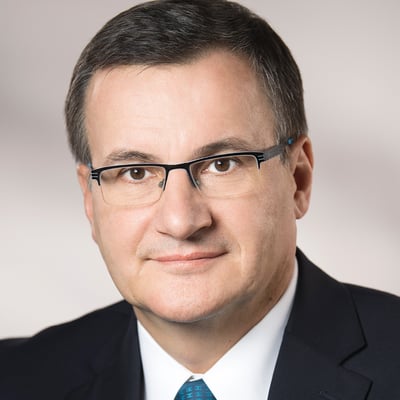
Boris Brkljaĉić, MD, PhD is a professor of radiology and chair of Radiology Cathedra of University of Zagreb School of Medicine, as well as the vice rector at the University of Zagreb in Zagreb, Croatia. He has served in numerous leadership roles, including as the president-elect and general secretary of the International Society of Radiology (ISR), and past president of the European Society of Radiology (ESR). He is also currently the chair of Eurosafe Imaging, a major ESR initiative to promote and improve imaging quality and safety throughout Europe, as well as the international associate editor for Radiology.
ACR Honorary Fellows are unique in their contributions to the world. Brkljaĉić also has the distinction of expanding ACR’s best practices both in Croatia and across Europe. “While the world is replete with remarkable radiologists who serve our profession admirably, few are able to impact the practice of radiology with the principles espoused by the ACR as significantly as Dr. Boris Brkljaĉić,” writes James A. Brink, MD, FACR, as part of Brkljaĉić’s nomination.
Brkljaĉić was one of the first to pilot and disseminate the ESR iGuide clinical decision support system, which was developed jointly by the ACR and ESR. Brkljaĉić also led the EU-JUST-CT European project, which investigated the appropriateness of CT imaging in seven EU member states using the ESR iGuide as a standard from 2021 to 2024.
Brkljaĉić’s commitment to best practices and standard of care is also evident in his work with breast cancer screening. Brkljaĉić introduced and organized a national breast cancer screening program in Croatia that has been running for 18 years, one of his proudest accomplishments.
“I am so incredibly proud of the work done in reducing breast cancer mortality,” he says. “Between the work of our program and the improvement of imaging quality in Croatia, we’ve been able to see a decrease in Croatian breast cancer mortality for the last 8 years.” Brkljaĉić also improved breast imaging in Croatia by introducing breast MRI to the country in 2006 and breast sonoelastography in 2009, as well as translating the Breast Imaging and Reporting Data System (BI-RADS®) lexicon into Croatian.
Croatian radiology has also benefitted from his work in vascular ultrasound. Brkljaĉić has written two fundamental textbooks on the subject and has trained more than 550 physicians in Croatia and neighboring countries since 1998.
He has also published 73 book chapters and more than 140 peer-reviewed original research articles, and he has given more than 330 invited lectures within Croatia and internationally. Teaching is his passion, and he recommends young radiologists be involved in it as much as they can. “Teaching and research give you a different perspective to life, even if it isn’t aways the best option financially,” he advises. “Being able to have direct contact with patients and students is so rewarding — you get the best of both worlds.”
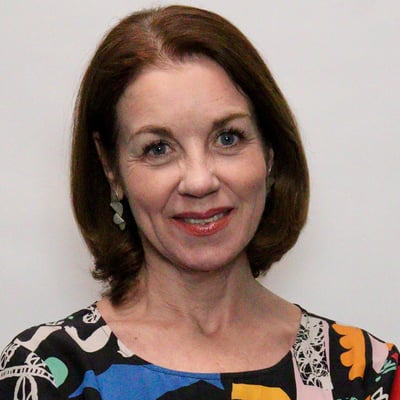
“Across the international communities of clinicians, scientists, educators and public servants, few have achieved distinction across all these domains, yet Professor Sandra L. Turner is the rare example of one who has scaled the entire range,” writes Alan C. Hartford, MD, PhD, FACR, in his support of Turner’s nomination.
Turner currently serves as clinical professor of radiation oncology at the University of Sydney, Australia, and is the clinical lead of professional and faculty development at the Research and Education Network in the Western Sydney Local Health District in collaboration with the University of Sydney. She is also senior staff specialist in radiation oncology at the Crown Princess Mary Cancer Centre, Westmead Hospital.
Turner has made many contributions to the specialty at the leadership level. She has served in multiple capacities on the radiation oncology faculty at the Royal Australian and New Zealand College of Radiologists (RANZCR), including as chair of many committees and task forces ranging in topics from education and training to indigenous peoples and diversity, equity and inclusion. In recognition of her efforts, RANZCR awarded her one of its top honors, the Roentgen Medal, in 2016.
With a PhD in medical education, it’s clear that mentorship and education are important to Turner. Additionally, she has mentored many radiation oncology trainees, junior radiation oncologists, medical students, radiation therapy technologists and other physicians throughout her career. Turner was also instrumental in reforming RANZCR’s radiation oncology training curriculum to ensure that the program aligned with rapidly changing radiation oncology technologies, as well as modern educational principles. As a result, it has been recognized internationally as the gold standard of comprehensive evidence-based radiation oncology curricula.
In addition to her teaching interests, Turner has also contributed significantly to radiation oncology research, particularly in the field of genitourinary radiation oncology. She has published 124 peer-reviewed papers, including important clinical trials for the Trans-Tasman Radiation Oncology Group, many of which are considered “practice-changing” by nominator Simon S. Lo, MB, ChB, FACR, and have been published in top oncology journals such as Lancet Oncology and the International Journal of Radiation Oncology.
Turner has also led extensive engagement efforts in public service and advocacy. One of her highest profile efforts has been her lead role in Australia’s Targeting Cancer campaign, which she founded as part of her work as chair of the RANZCR Faculty of Radiation Oncology Media and Profile Committee. Targeting Cancer aimed to raise awareness of underused radiation therapy as an effective, safe and cost-effective cancer treatment. The campaign has reached more than 150 million people worldwide and continues to grow. Her skill in connecting with the public has led to numerous public speaking engagements and interviews, including ABC Lateline, ABC News, Norman Swan’s Tonic Health Program, Breakfast TV Auckland, and a plethora of radio interviews, not to mention podcasts and many print and online articles.
Turner’s service also extends to lesser-known efforts. During the COVID-19 pandemic, Turner volunteered to serve as a coordinator for more than 50 physicians and scientists who assisted in administering vaccinations after practice hours, performing this task along with her regular professional roles and responsibilities. “This work demonstrated her commitment to the needs of others, a willingness to endure risk and self-sacrifice, and an instinct to lead when patients and the public are in danger,” writes Hartford.
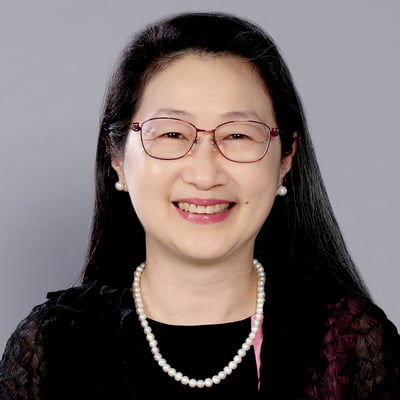
Colleagues have a wealth of titles for Evelyn Ho Lai Ming, MBBS, MMED. Nominators and supporters describe Ho as an internationally known leader, a passionate community advocate and a committed citizen.
Currently a consultant clinical radiologist at ParkCity Medical Centre, in Kuala Lumpur, Malaysia, Ho has made an enormous impact on radiology in Malaysia. Ho was a critical leader in initiating an accreditation program for mammography in Malaysia, introducing basic accreditation of volunteer mammography providers under the Malaysian College of Radiology’s Value Added Subsidized Mammogram program. The program, in its first decade (2001–2011), provided more than 8,000 women with subsidized breast cancer screening. Ho also conducted the first survey on Quality Accreditation Program in Mammography in Malaysia in 2005.
Additionally, Ho served as a technical advisor to the Breast Cancer Welfare Association in Malaysia and as a member of both the Expert Group of the Malaysian National Council of Women’s Organizations and the Malaysian Breast Cancer Council. She has written a book helping patients understand breast health and how to perform breast self-examinations. She has given innumerable talks and workshops to educate the public and healthcare professionals on radiology and breast cancer screening.
Ho has worked tirelessly to demonstrate the value of radiology, and her influence extends far beyond her country’s borders. Ho has served in many leadership positions in both national and international radiology societies including the RSNA and the International Society of Radiology. As president of the Asian Oceanian Society of Radiology (AOSR), Ho raised the visibility of AOSR internationally, increased member participation, connected with long dormant members and enhanced member benefits. She has also long been a champion of the “value-based radiologist” and advocated for programming aimed at improving radiologists’ leadership and negotiation skills.
Ho has also been recognized with multiple prestigious honors and awards, including the inaugural Novartis–Malaysian Breast Cancer Council Award for Leadership in Breast Cancer Advocacy, the AOSR Gold Medal and honorary memberships in the RSNA, the Chinese Society of Radiology, and the European Society of Radiology and honorary fellowship in the Hong Kong College of Radiologists. Additionally, she was recognized as one of the “Great Women of Our Time” by Malaysian Women’s Weekly for her contributions to health, sports and wellness.
Ho’s many accomplishments reflect the advice she has for young radiologists: “Look long-term. Consider getting involved in what you want to see as the future of our profession,” she says. “Although being involved in a radiological organization isn’t always easy work, the satisfaction from being part of the development and improvement of our specialty is priceless.” Ho also recommends that radiologists extend their participation further, adding, “You can do even more by partnering with organizations outside our profession. Radiology doesn’t exist in a vacuum, and working with more partners improves patient outcomes, which is why we are in medicine in the first place.”
By Meghan Edwards, Chad E. Hudnall, Alexander Utano, and Raina Keefer, ACR Press
Chapter Champions
ACR state chapter work remains a microcosm of radiology practices and protections.
Read more
Above and Beyond
Nothing connects us as individual ACR members to our past as do the ACR Honors and Awards . Gold Medalists share the same honor as Marie Curie, recipient of the ACR Gold Medal in 1931, and Fellows enjoy the same accolades as do the first class of 70 ACR Fellows inducted in 1923 as founders of the College. At that time, the discipline of radiology was only 28 years old.
Read moreCCTA Technical Reimbursement Doubles, But We All Have to Help Keep It That Way
It’s always refreshing to be able to report good news on the reimbursement front. Thanks to ACR’s efforts in collaboration with the Society for Cardiovascular Computed Tomography (SCCT) and the American College of Cardiology (ACC), CMS has reclassified a coronary computed tomography angiography (CCTA) from a lower-reimbursing ambulatory payment classification (APC) to a higher-reimbursing one.
Read more